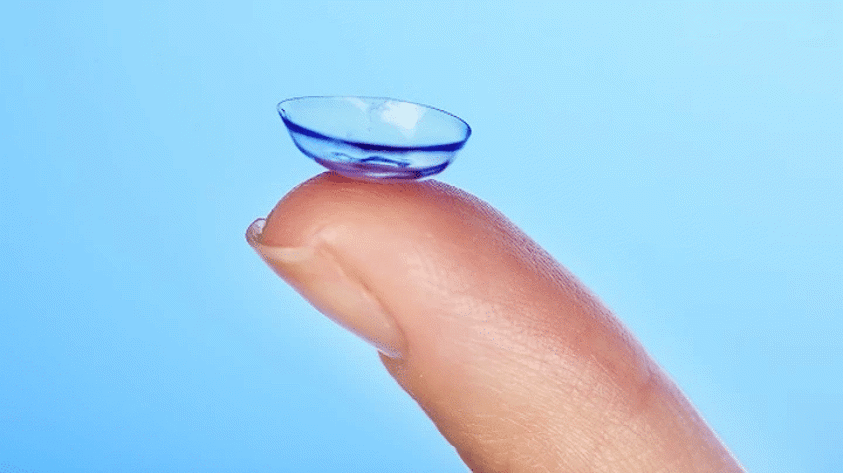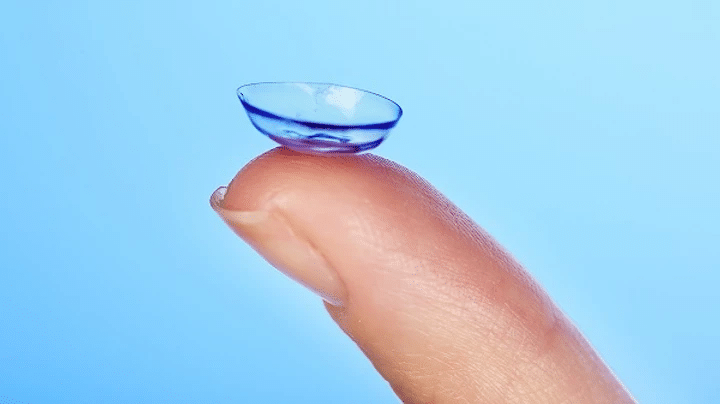There are two general types of contact lenses
1. Hard contact lenses
The hard lenses most commonly used today are rigid, gas-permeable lenses (RGP for short). They are made of plastics and other materials such as silicone or fluoropolymers. Hard lenses hold their shape (rigid), yet allow the free flow of oxygen through the lenses to the cornea (gas permeable).
RGP lenses may be the best choice when the cornea has enough astigmatism (is shaped like a rugby ball instead of a football) that a soft lens will not provide sharp vision. They may also be preferable when a person has allergies or tends to form protein deposits on his or her contacts.

2. Soft contact lenses
Soft lenses are the choice of most contact lens wearers. These lenses are comfortable and come in many versions, depending on how you want to wear them.
- Daily-wear lenses are removed nightly and are replaced on an individualised schedule. They should not be used as an extended-wear lens and are only licensed for single use only.
- Extended-wear lenses are worn overnight but are removed at least weekly for thorough cleaning and disinfection. They are being recommended less frequently since there is a greater risk of corneal infection with any overnight wear of contact lenses.
- Disposable-wear lenses are more expensive but convenient. They are removed nightly and replaced on a daily, weekly, biweekly, or monthly basis. Disposable lenses are sometimes recommended for people with allergies and for those who tend to form deposits on their lenses.
- Coloured contact lenses are contacts that change your eye colour, the appearance of your eye, or both. And in the case of circle lenses, they can also make your iris appear bigger. Coloured lenses are available by prescription and should only be worn after an eye exam and fitting by a qualified eye care professional. Over-the-counter coloured contacts, including circle lenses, are illegal and pose a serious danger to your eye health. They can cause eye injury, eye infection, and vision loss.
- Toric soft contact lenses can correct astigmatism, but sometimes not as well as RGP lenses do. They usually cost more than other contact lenses.
Bifocal or multifocal contact lenses are available in both soft and RPG varieties. They can correct near-sightedness, far-sightedness and astigmatism in combination with presbyopia. Cleaning and disinfection are specific to the lens material. Visual quality is often not as good as with single vision lenses; however, for some people, the ability to correct presbyopia is worth it.
A hard lens or soft lens?
If you would like to try the lenses on, then there will need to be an assessment and fitting appointment to assess the suitability and to discuss the patient requirements and expectations. Lenses will be inserted in the eye by the optician and allowed to settle, usually for about 30 to 40 mins.
Once the correct lens type and the prescription is determined, the patient will then have to undergo tuition to explain how to insert and remove the lenses and to explain about hygiene and lens storage and disinfection. The patient will then be allowed to take trial lenses, usually for about 7 to 10 days to see how they cope with them in their daily routine. A follow-up appointment is then required to finalise the prescription that is issued. This prescription will have an expiry date, usually 6 or 12 months, after which a further check-up or aftercare appointment will be required to verify the prescription for a further issue.
There are many myths surrounding contact lenses, learn more here.
Continuing follow-up appointments at regular intervals are essential in maintaining healthy vision.





